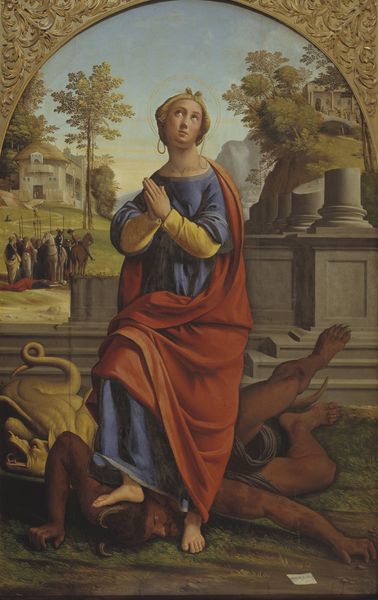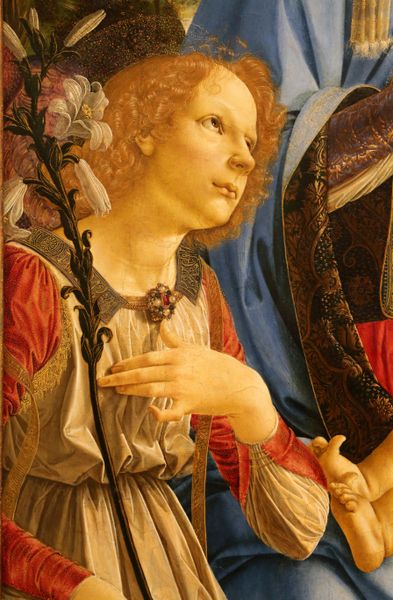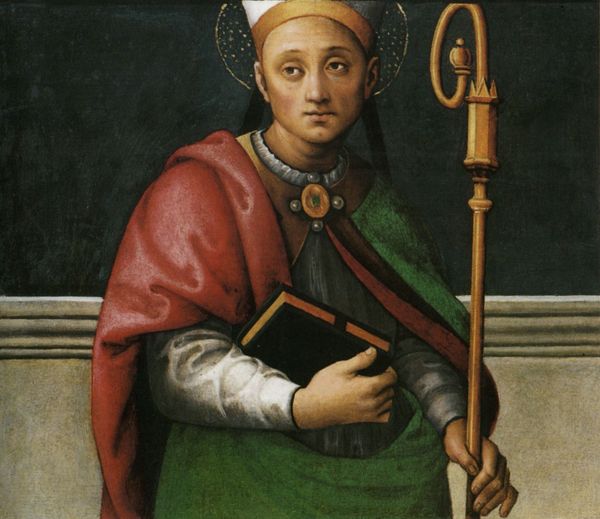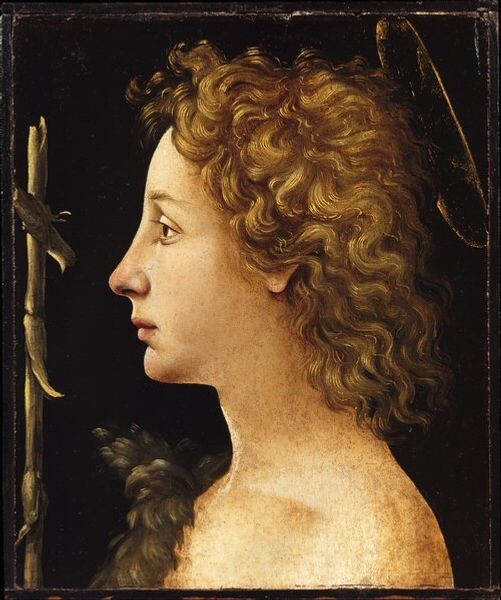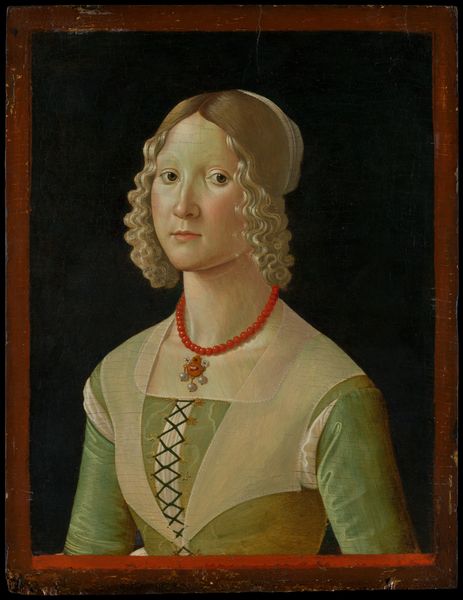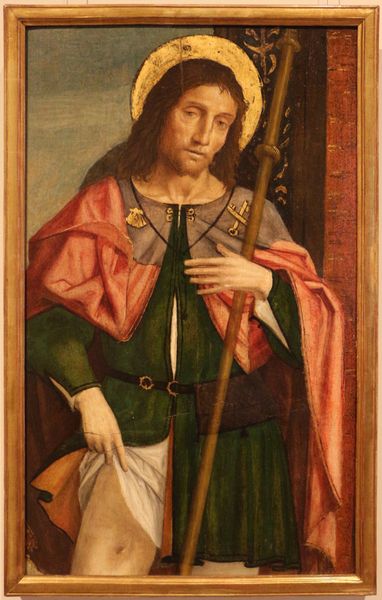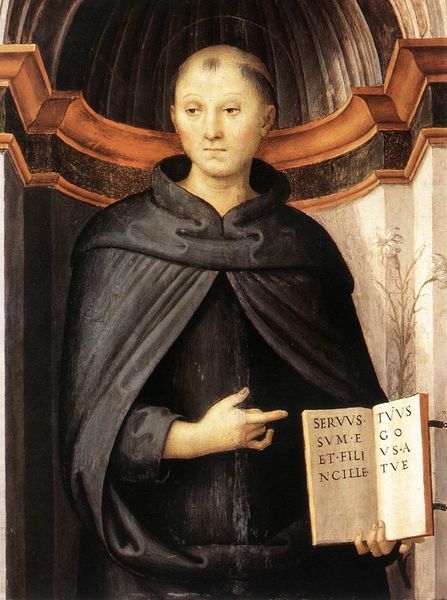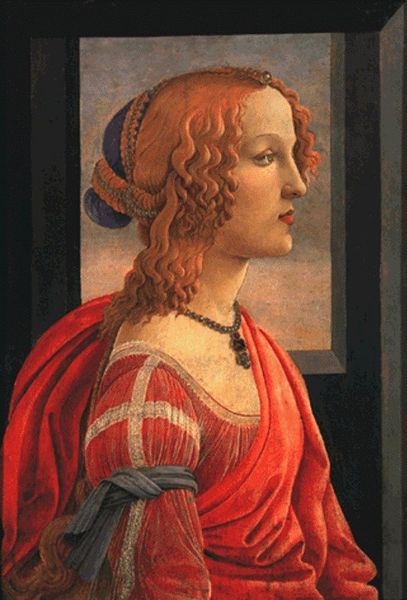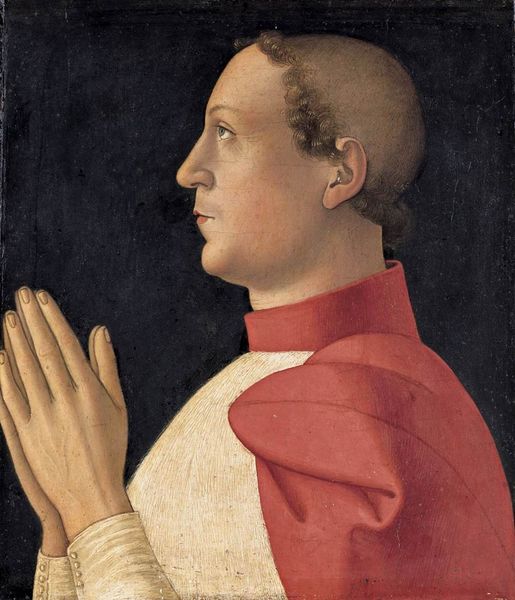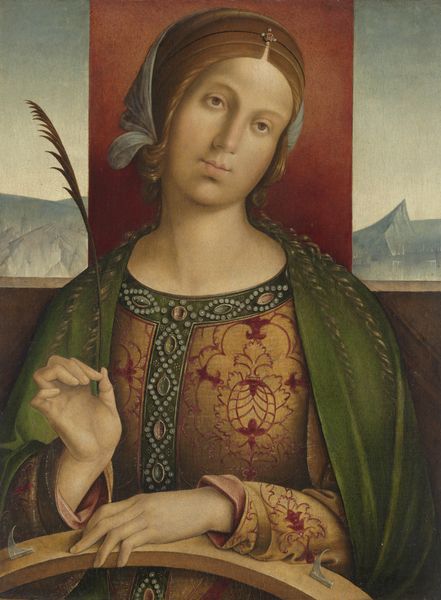
Woman with attributes of Saint Catherine, so called Catherina Sforza Sandro Botticelli 1475
0:00
0:00
painting, oil-paint
#
portrait
#
painting
#
oil-paint
#
figuration
#
oil painting
#
history-painting
#
italian-renaissance
#
early-renaissance
Copyright: Public domain
Editor: Here we have Sandro Botticelli's "Woman with Attributes of Saint Catherine, So-Called Catherina Sforza," an oil painting from around 1475. The subject’s profile, that elaborate hair...there's almost a sculpted quality. What's your read on this, in terms of Botticelli’s intent or even just the feel of the piece? Curator: Ah, Botticelli. His lines, they sing, don't they? What I find intriguing here is the implied narrative. She's presented as Catherine, with the wheel alluding to her martyrdom, but the "so-called Catherina Sforza" part is the kicker. Was this a straight-up religious depiction or something more…political, perhaps? A subtle nod to a powerful contemporary figure masked as piety? The Renaissance loved those clever visual games. I also find her gaze interesting – so calm, composed. What do you think she’s contemplating, looking out past the painting? Editor: It's interesting how the wheel kind of blends into the landscape, blurring the lines between religious symbol and personal attribute. So, you're saying that the setting isn't really important for interpreting the piece? Curator: Not unimportant, no. But consider the perspective – her intense focus versus the blurry world outside. Is she turning away from something? Or longing for something else? It reminds me of closed doors. Editor: Mmm, a closed door is a good image to relate with a woman in the Renaissance. Is this what interests you the most in the painting? Curator: Absolutely. The mystery. The quiet subversion, perhaps. What I think is beautiful is Botticelli's ability to hold those opposing ideas in perfect balance. But the most delicious part, as ever, is the secret story *we* tell ourselves about what's going on behind those composed eyes. Editor: I hadn't considered it that way - the relationship with the spectator, how we can turn the artwork into something really alive when we start to ask those questions. Curator: Exactly. It's not about the answers, but the asking, isn’t it? Each viewing births a new story, just like that.
Comments
No comments
Be the first to comment and join the conversation on the ultimate creative platform.

